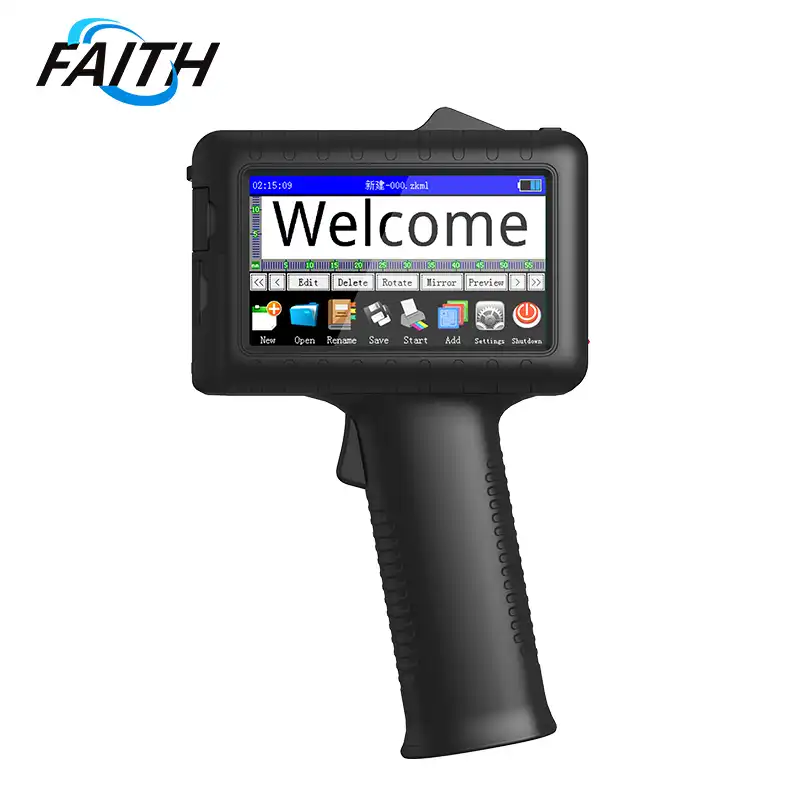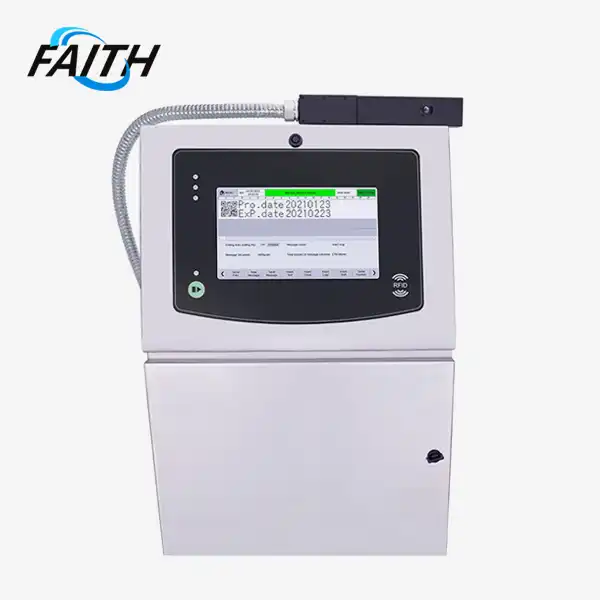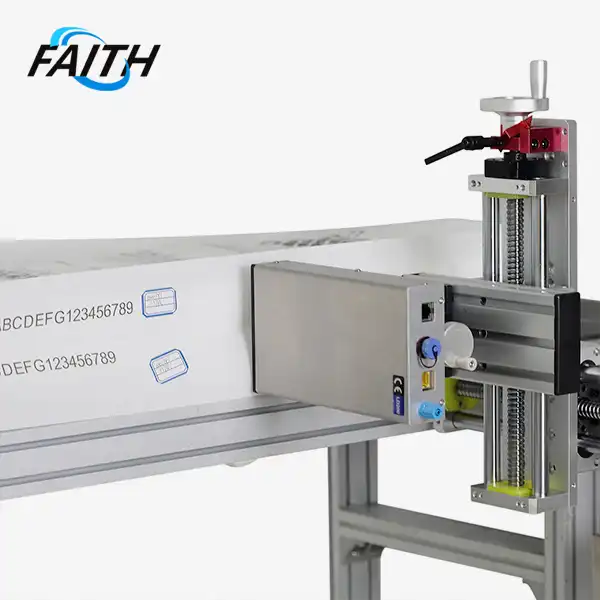What is industrial print?
Industrial printing refers to the process of applying ink or other marking materials onto products or packaging as an integral part of the manufacturing process. This technology adds significant value to products by providing essential information, branding, or tracking capabilities. While the primary value of a product lies in its inherent qualities, industrial printing enhances its functionality, traceability, and marketability. From date codes on food packaging to serial numbers on electronic components, industrial continuous inkjet printing plays a crucial role in various industries, ensuring products meet regulatory requirements and consumer expectations.
The Evolution of Industrial Printing Technology
Industrial printing has come a long way since its inception. Early methods involved manual stamping or rudimentary mechanical processes. However, as technology advanced, so did the capabilities and efficiency of industrial printing systems. One of the most significant developments in this field has been the advent of industrial continuous inkjet printing.
The Rise of Continuous Inkjet Technology
Continuous inkjet (CIJ) printing has revolutionized the industrial printing landscape. This technology offers unparalleled speed, versatility, and reliability, making it a preferred choice for many manufacturers. Faith printers operate on a fascinating principle: controlling the movement of charged particles in an electric field.
Here's how it works: A built-in pump creates a stable ink flow, which is then directed into a crystal oscillator (also known as a spray chamber) through a control solenoid valve. Within the crystal oscillator, electronic pulses generate vibrations that break the ink flow into individual droplets. The precision of this process is remarkable – if the crystal oscillator vibrates 70,000 times per second, it can produce an astounding 70,000 ink droplets in that same second.
This high-speed droplet formation allows CIJ printers to achieve printing speeds of up to 576 meters per minute, making them ideal for high-volume production environments. Moreover, CIJ technology can print on a wide variety of surfaces, including those that are bumpy, rough, or textured. This versatility makes it suitable for numerous industries, from food packaging to electronics manufacturing.
Advancements in Ink Technology
Alongside the evolution of printing hardware, ink technology has also made significant strides. Modern industrial inks offer a range of properties to meet diverse application needs:
- High adhesion for lasting prints on challenging surfaces
- Migration resistance to prevent ink from seeping into packaged products
- High-temperature resistance for applications in extreme environments
- Special formulations for printing on glass and other tricky materials
- Permeability for specific packaging requirements
- Food-grade and oil-resistant inks for the food industry
These advanced ink formulations ensure that industrial printing can meet the stringent requirements of various sectors, from automotive to pharmaceuticals.
Applications and Benefits of Industrial Continuous Inkjet Printing
Industrial continuous inkjet printing has found its way into numerous industries due to its versatility and efficiency. Let's explore some of its key applications and benefits:
Diverse Application Areas
CIJ printers can print on a wide range of materials, including:
- Cartons and packaging materials
- Plastics of various types
- Metals and alloys
- Wooden boards and products
- Pipes and tubes
- Stone and concrete products
- Cables and wires
- Glass surfaces
- Electronic components
- Automotive parts
- Industrial and chemical packaging
- Food products and containers
- Gift boxes and promotional items
This extensive range of applications makes CIJ printing a versatile solution for many manufacturing and packaging needs.
Key Benefits of CIJ Printing
Industrial continuous inkjet printing offers several advantages over other marking technologies:
- High-speed printing: With print speeds up to 576 m/min, CIJ printers can keep up with even the fastest production lines.
- Versatility: The ability to print on various surfaces, including uneven or textured ones, makes CIJ suitable for a wide range of products.
- Non-contact printing: Since the printhead doesn't touch the product, there's less risk of damage to delicate items or contamination in sensitive industries.
- Multiple line printing: CIJ printers can typically print 1-5 lines of text or codes simultaneously, increasing information density.
- Variable data printing: Easy customization allows for real-time printing of changing information like date codes, batch numbers, or sequential serial numbers.
- Low maintenance: Modern CIJ printers are designed for reliability and ease of maintenance, reducing downtime and operational costs.
- Environmentally friendly: Many CIJ inks are now formulated to be more environmentally friendly, meeting growing sustainability demands.
The Future of Industrial Printing: Trends and Innovations
As technology continues to advance, the industrial printing sector is poised for further innovations. Let's explore some emerging trends and future possibilities:
Integration with Industry 4.0
The concept of Industry 4.0, or the fourth industrial revolution, is reshaping manufacturing processes worldwide. Industrial printing is no exception. We're seeing increased integration of CIJ printers with broader manufacturing execution systems (MES) and enterprise resource planning (ERP) systems. This integration allows for:
- Real-time production data collection and analysis
- Automated print job scheduling and management
- Enhanced traceability and quality control
- Predictive maintenance to minimize downtime
As this trend continues, we can expect to see even smarter, more connected printing systems that contribute to overall manufacturing efficiency and intelligence.
Advancements in Inkjet Technology
While CIJ technology is already impressive, ongoing research and development are pushing the boundaries of what's possible. Some areas of innovation include:
- Higher resolution printing for more detailed codes and graphics
- Faster print speeds without compromising quality
- Expanded color options for more vibrant and eye-catching prints
- Development of new ink formulations for specialized applications
- Improved droplet control for even greater precision
These advancements will enable industrial printers to meet increasingly demanding requirements across various industries.
Sustainability and Environmental Considerations
As global awareness of environmental issues grows, the industrial printing sector is responding with more sustainable solutions. This includes:
- Development of eco-friendly inks with reduced volatile organic compounds (VOCs)
- More energy-efficient printing systems
- Improved ink recycling and waste reduction processes
- Use of biodegradable materials in printer components
These green initiatives not only help reduce the environmental impact of industrial printing but also align with the sustainability goals of many manufacturers and consumers.
FAQ
Q: What types of information can be printed using industrial continuous inkjet printers?
A: CIJ printers can print a wide range of information, including text, dates, logos, QR codes, barcodes, and other product identifiers.
Q: How does the operating environment affect CIJ printer performance?
A: CIJ printers typically operate best in environments with temperatures between 0-45°C and humidity levels of 30-70% RH. However, specialized systems can be designed for more extreme conditions.
Q: Can industrial CIJ printers be customized for specific manufacturing needs?
A: Yes, many manufacturers offer OEM/ODM support, allowing for customization of printers to meet specific industrial requirements.
Conclusion
Industrial printing, particularly industrial continuous inkjet printing, has become an indispensable part of modern manufacturing processes. Its ability to add value through high-speed, versatile, and reliable marking makes it a crucial technology across numerous industries. As we look to the future, the integration of CIJ printing with Industry 4.0 principles, ongoing technological advancements, and a focus on sustainability promise to further enhance its capabilities and applications.
For those seeking to leverage the power of industrial UV inkjet coding and traceability system solutions, Shenyang Faith Technology Co., Ltd. offers a wealth of expertise and innovative products. With over a decade of experience in the inkjet printing industry, they continue to push the boundaries of what's possible in industrial printing. To learn more about their cutting-edge solutions and how they can benefit your manufacturing process, don't hesitate to contact us at sale01@sy-faith.com.
References
1. Johnson, M. (2022). The Evolution of Industrial Printing Technologies. Journal of Manufacturing Innovation, 15(3), 245-260.
2. Smith, A., & Brown, B. (2021). Continuous Inkjet Printing in Modern Manufacturing. Industrial Engineering Review, 28(2), 112-128.
3. Lee, S., et al. (2023). Sustainability in Industrial Printing: Challenges and Opportunities. Green Manufacturing Quarterly, 9(1), 78-95.
4. Williams, R. (2020). Industry 4.0 and the Future of Industrial Printing. Digital Factory Journal, 12(4), 302-318.
5. Chen, H., & Zhang, Y. (2022). Advancements in Industrial Inkjet Technology: A Comprehensive Review. Progress in Printing Science, 7(2), 189-205.
Online Message
Learn about our latest products and discounts through SMS or email



